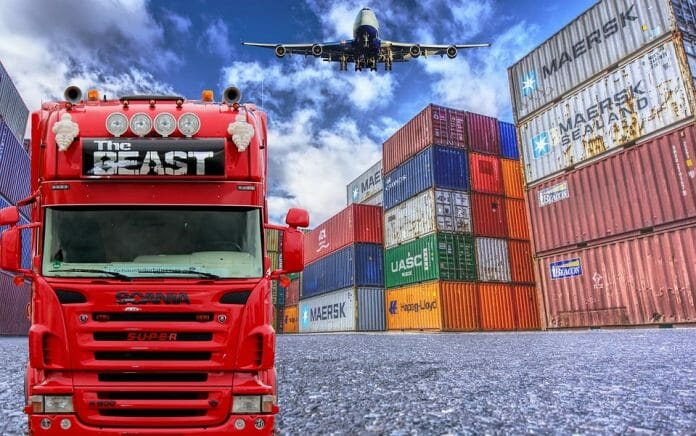South-East Asia, and particularly Malaysia, cannot expect to see a wide-scale
divergence of supply chains coming its way unless there are improvements in
production technology and capacity, and regional integration, according to HSBC.
The comments follow widespread commentary about supply chains shifting to South-East Asia because of the region’s growing economies and consumer markets,
especially with trade tensions and rising production costs affecting other markets.
Despite the speculation, there has been little evidence of a wide-scale shift occurring
to date.
“The changes in global trade are causing businesses to re-visit their supply chain
investment and capacity strategies, but we have yet to see this convert into widescale shifts to South-East Asia, South Asia or other parts of the world,” said Andrew
Sill, Country Head of Commercial Banking, HSBC Malaysia.
Rather than seeing a wide-scale shift to Asean, due to trade tensions, multinationals
are diverging in their supply chain strategies with a mixture of localisation, offshoring
and re-shoring activities emerging.
Recent examples include:
The world’s largest furniture retailer IKEA has invested RM908 million to set
up a regional distribution and supply chain centre to serve the ASEAN market,
in Malaysia.
US-based Honeywell International Inc has chosen Kuala Lumpur as its
Asean headquarters as part of its bid to expand its reach in the region. The
headquarters is expected to further attract and develop the best talent to drive
its broad software-industrial offerings across the region.
Firms, like Tesla, see China’s production reliability, technological sophistication, and ease of business as unparalleled and are moving more of their production to the mainland.
With China moving up the technological curve, its lower-value production is
shifting to lower-cost markets. For example: Guizhou Tyres – based in China
– has expanded plans for its previously announced tyre plant in Vietnam
increasing the budget investment to nearly USD500 million.
Elsewhere, there are instances of western companies, such as Intel,
Whirlpool and Caterpillar re-shoring to be closer to home markets and
higher-end technology.
Across Europe, firms like British manufacturer, Dyson, are forging ahead
with South-East Asian investment to cater for the local consumer market
whilst retaining existing production facilities for exports elsewhere.
“Shifts in supply chains have been a multi-year phenomenon due to structural
changes in production technology, labour costs and emerging consumer markets.
Over the past decade, Asean has been perceived as a strong production option for
multinationals given its role within existing supply chains, growing consumer base,
and strong trade and investment ties,” continued Andrew.
“Businesses from China, Europe and the US want to see South-East Asia, and
Malaysia, further position itself as a viable alternative for lower-end production. For
example, leveraging on initiatives like the ‘Belt and Road’ that are accelerating the
region’s production capacity. However, to convert its much-touted supply chain
potential, South-East Asia needs to build more visibility and credibility amongst
international firms, particularly in their ability to handle and deliver production orders.”
The hot buttons that will matter for both large and small firms include how Asean
can deliver competitive production costs, and how technology and innovation are
being introduced to improve productivity. It will also come down to the relationship
factor and whether businesses feel confident that orders will be serviced on time and
on budget.
At a government level, this will require educating international firms about the
regulatory frameworks, tax incentives, and free trade zones, along with
demonstrating the improvements in ports and rail and other transport infrastructure.
It will also require Asean governments to demonstrate a pathway to longer-term
initiatives to remove the non-tariff barriers around the flow of goods across Asean,
the development of skilled labour; and the protection of IP, cybersecurity, and
movement of commercial data across borders.
Areas of specific focus to improve intra-Asean trade flow include:
Improvement in Asean’s transport infrastructure including roads, rail and
ports
Policies that raise the level of technological adoption
Increasing skilled labour and the flow of skilled labour
Increase the minimum threshold for goods that would require a Certificate of
Origin
Establishing automation of customs clearance across all Asean member
states
Introduce simplified and expedited clearances for low-value shipments
Introduce electronic system for the payment of cross-border duties and taxes
Harmonising of goods standards across sectors amongst Asean members
to avoid country-specific standards.
Policies that encourage the cross-border sharing of commercial data
Link up each of the Asean countries’ payment systems to make payments
convenient, affordable, fast, seamless and secure9
.
Reducing supply chain barriers of this nature could increase South-East Asia’s gross
domestic product by 9.3 per cent and exports by 12.1 per cent, according to the
World Economic Forum.
“While trade relations between Malaysia and the world’s major economies, like
China, have generally been positive and steadily growing, there is a lot of ground still
to cover within Asean’s backyard to further improve the intra-regional flow of trade
and investment. Agility and responsiveness to these challenges by Asean governments and corporates will determine whether the region’s supply chain potential can be realised amongst international firms who are re-examining their options,” concluded Andrew.









